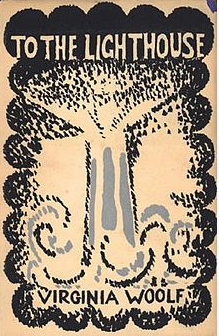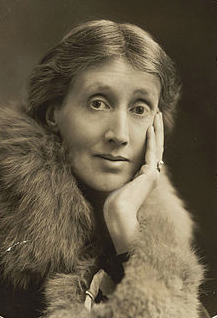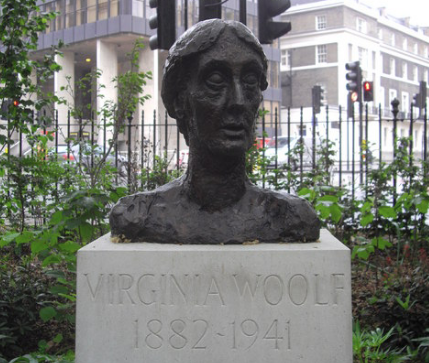Virginia Woolf has alway had a special place in my heart; her “To The Lighthouse” was one of the first modernist novels I read, a famously “difficult” book whose pleasures unlocked a part of my brain I hadn’t really explored. When—Spoiler Alert!— Lily Briscoe puts that  one last line into her painting, succeeding where other characters (especially that chauvinistic prat,Charles Tansley) said she couldn’t, a sense of victory swelled in my adolescent heart; it was a voyage completed, ending the sometimes depressing book (the deaths of Mrs. Ramsay and her children, hitting harder for being dealt with in such a matter-of-fact, passing manner, separated from passing time by brackets and parentheses) on a high note.
one last line into her painting, succeeding where other characters (especially that chauvinistic prat,Charles Tansley) said she couldn’t, a sense of victory swelled in my adolescent heart; it was a voyage completed, ending the sometimes depressing book (the deaths of Mrs. Ramsay and her children, hitting harder for being dealt with in such a matter-of-fact, passing manner, separated from passing time by brackets and parentheses) on a high note.
Woolf’s own life was turbulent and tragic. Born Virginia Stephens into a literary family, she married Leonard Woolf, in 1921. They were central to the group of writers and artists that came to be known as the Bloomsbury group (other members included the economist John  Maynard Keynes, writers Lytton Strachey and E.M. Forster, and painter Roger Fry) after the neighborhood of London where most of them lived. It was also where she and Leonard established the Hogarth Press, who published, in addition to the works of group members, T.S. Eliot and Vita Sackville-West, the latter becoming Virginia’s lover. (Although she had a blind spot when he came to James Joyce, the the point where Hogarth declined to publish “Ulysses” in 1919.)
Maynard Keynes, writers Lytton Strachey and E.M. Forster, and painter Roger Fry) after the neighborhood of London where most of them lived. It was also where she and Leonard established the Hogarth Press, who published, in addition to the works of group members, T.S. Eliot and Vita Sackville-West, the latter becoming Virginia’s lover. (Although she had a blind spot when he came to James Joyce, the the point where Hogarth declined to publish “Ulysses” in 1919.)
Virginia, who had suffered from what would now be diagnosed as bipolar depression most of her life, became seriously depressed when her home in Bloomsbury was destroyed in the London Blitz, and drowned herself by walking into the River Ouse by her house in Sussex, weighed down by stones she stuffed into her overcoat pockets.
 The book also closed today for Russian Czar Ivan the Terrible (1584), Olympian Jim Thorpe (1953), President Dwight D. Eisenhower (1969), non-scary clown Emmett Kelly (1979), painter Marc Chagall (1969), the inspiration for “The Sound of Music” Maria von Trapp (1979), playwright Eugene Ionesco (1994), game show host Art James (2004), and former Secretary of Defense Casper Weinberger (2006).
The book also closed today for Russian Czar Ivan the Terrible (1584), Olympian Jim Thorpe (1953), President Dwight D. Eisenhower (1969), non-scary clown Emmett Kelly (1979), painter Marc Chagall (1969), the inspiration for “The Sound of Music” Maria von Trapp (1979), playwright Eugene Ionesco (1994), game show host Art James (2004), and former Secretary of Defense Casper Weinberger (2006).

Leave a Reply